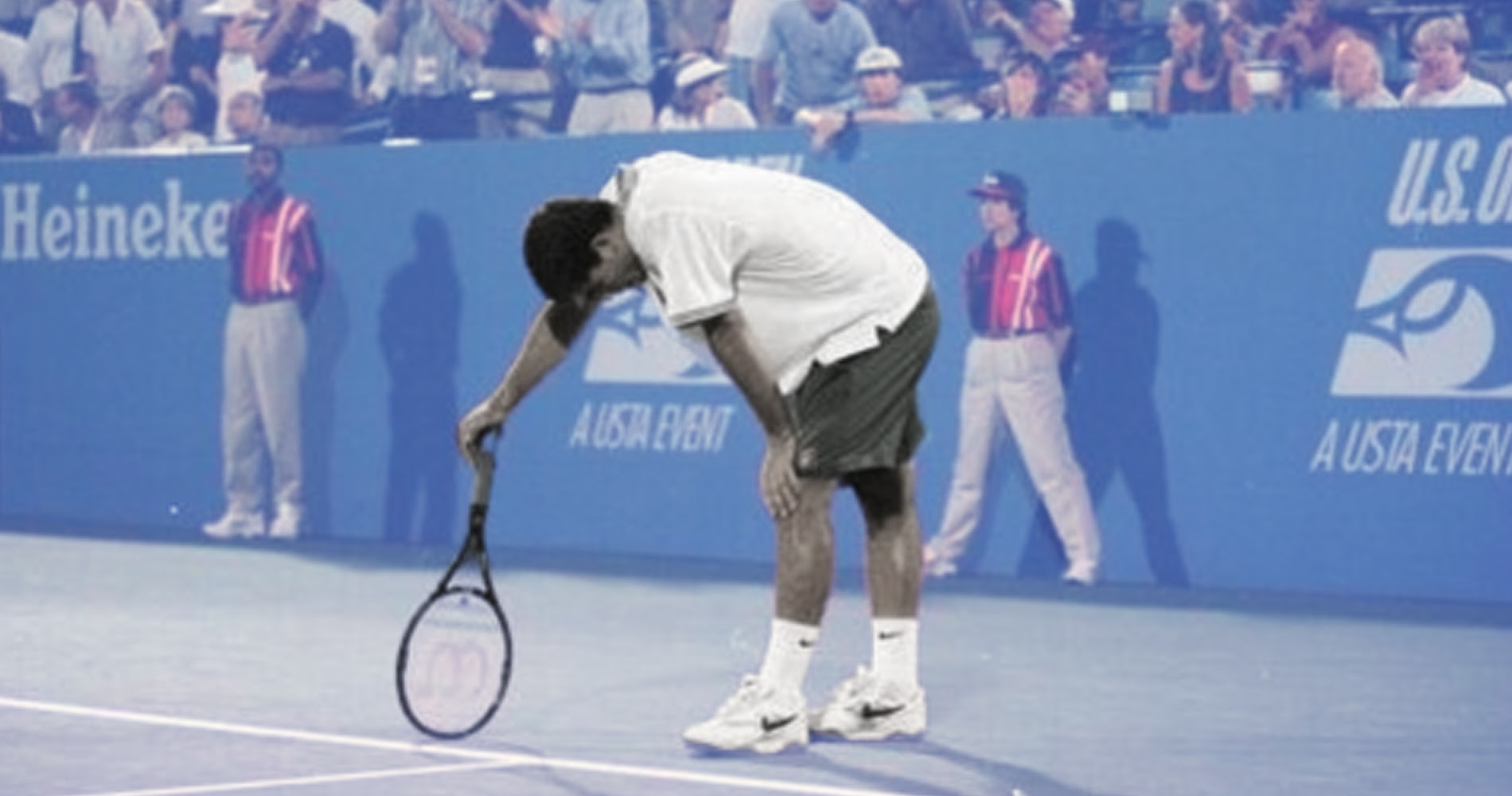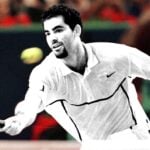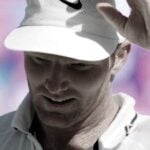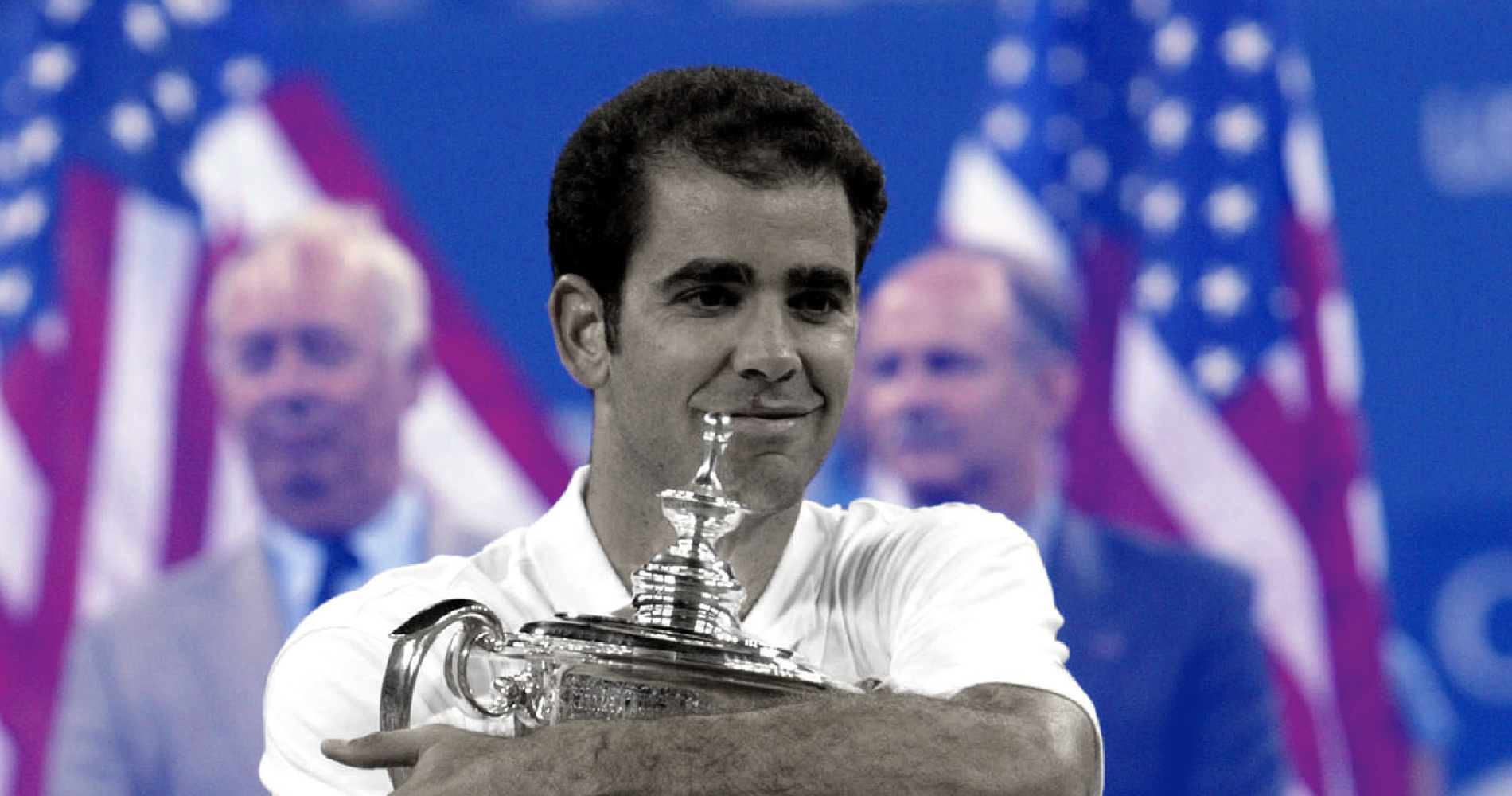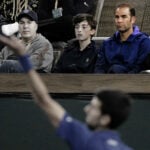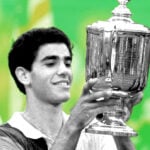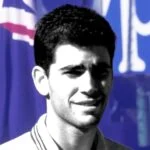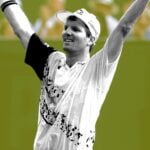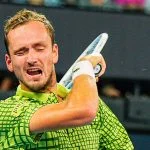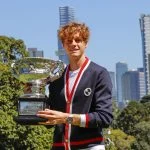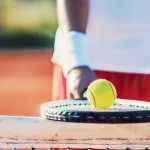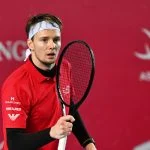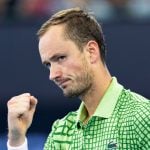January 24, 1995: The day a heartbroken Pete Sampras burst into tears on court at the Australian Open
Every day Tennis Majors takes you back in time to celebrate a great moment in tennis history. Today, we go back to 1995 to witness how Pete Sampras couldn’t control his tears during his quarter-final clash against Jim Courier after an emotional fortnight
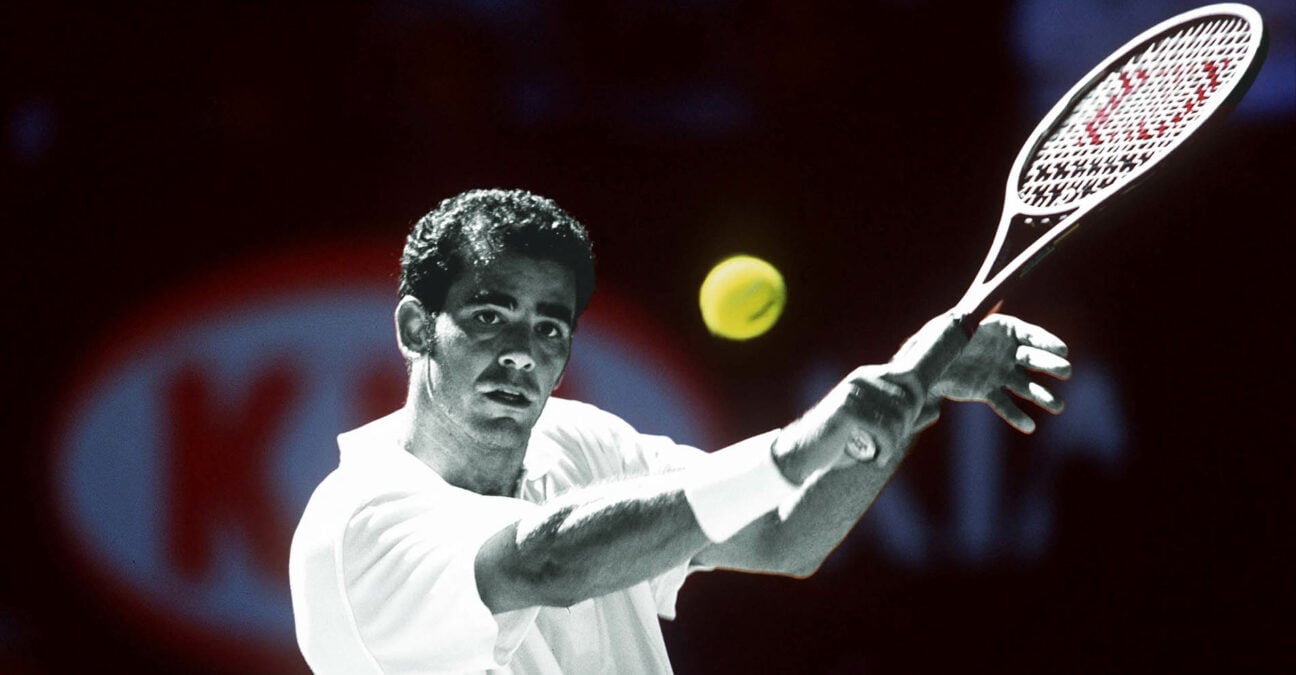 Pete Sampras Australian Open
Pete Sampras Australian Open
What happened exactly on that day?
On this day, January 24, 1995, after coming back from two-sets-to-love down against fellow American Jim Courier in the quarter-finals of the Australian Open, Pete Sampras couldn’t contain his emotions anymore and began bawling on court before the fifth set commenced.
The world No 1, already exhausted after having played five sets against Magnus Larsson in the previous round, was distraught from learning that his long-time coach, Tim Gullikson, had been diagnosed with a brain tumor and had been sent back to the United States for further treatment.
The players: Pete Sampras and Jim Courier
- Pete Sampras: Five-time Grand Slam champion
Pete Sampras was born in 1971 in Washington, United States. Although he was a part of the golden American generation, along with Agassi, Chang and Courier, Sampras was the last of them to become a top player.
At the end of 1989, while his rivals had all claimed titles and achieved breakthrough Grand Slam performances, Sampras was only ranked No 81 in the world. However, in September 1990, he took the tennis world by surprise by becoming the youngest player to ever triumph at the US Open, defeating Agassi in the final (6-4, 6-3, 6-2).
Thanks to this great triumph, he entered the top 10. But over the next two years, Sampras struggled to consolidate his new status as a Grand Slam champion. He faced several big disappointments, such as losing his two matches in the 1991 Davis Cup final (against Frenchmen Henri Leconte and Guy Forget) and a cruel loss to Stefan Edberg in the 1992 US Open final (3-6, 6-4, 7-6, 6-2). He said later that this last defeat had made him realize he couldn’t be satisfied with being No 2.
Sampras became world No 1 on April 12, 1993 for the first time. At the time it was criticized, as he hadn’t won a major tournament in more than two years, but in the second half of the year, despite a two-week interruption in July, he was clearly head and shoulders above the pack. Triumphing at both Wimbledon (defeating Courier in the final, 7-6, 7-6, 3-6, 6-3) and the US Open (beating Frenchman Cédric Pioline, 6-4, 6-4, 6-3), Sampras accumulated eight titles throughout the year.
His hold on the tour grew stronger in 1994, when he claimed a third consecutive major crown in Melbourne (defeating Todd Martin, 7-5, 6-4, 6-4), and then managed to defend his title at Wimbledon at the expense of Goran Ivanisevic (7-6, 7-6, 6-0). Suffering an early loss at the US Open (lost to Jaime Yzaga in the fourth round, 3-6, 6-3, 4-6, 7-6, 7-5), Sampras finished 1994 strong, beating Boris Becker in the Masters Cup final (4-6, 6-3, 7-5, 6-4).
- Jim Courier: Four-time Grand Slam champion
Born in 1970 in Florida, United States, Jim Courier was one of many players that developed a world-class game at the Nick Bollettieri Tennis Academy in the 1980s. He developed quite an unconventional game, using western grips and short backswings, often compared with baseball swings, which matched the trademark baseball cap he never played without. Courier’s enormous serve and lethal inside-out forehand were his signature shots, and he was famous for his dynamic work ethic, commitment and fitness.
Courier claimed his first ATP title in 1989 in Basel, upsetting world No 3 Stefan Edberg in the final (7-6, 3-6, 2-6, 6-0, 7-5). Although he wasn’t expected by many to take the lead amongst the rising American stars, he was first to make a Grand Slam breakthrough in 1991, claiming the French Open crown, defeating Andre Agassi (3-6, 6-4, 2-6, 6-1, 6-4).
This was the start of Courier’s domination. After a heavy loss against Stefan Edberg in the 1991 US Open final (6-2, 6-4, 6-0), Courier took his revenge against the Swede by defeating him in the 1992 Australian Open (6-3, 3-6, 6-4, 6-2) and knocking him off the world No 1 spot in February.
A few months later, he confirmed his domination of the tour by successfully defending his Roland-Garros crown (beating Petr Korda in the final, 7-5, 6-2, 6-1), and he finished 1992 on top of the ATP rankings. In 1993, he successfully defended his Australian Open title, his fourth and final major title.
In the following months, Courier was defeated in two consecutive Grand Slam finals: after losing to Sergi Bruguera in a close Roland-Garros final (6-4, 2-6, 6-2, 3-6, 6-3), he was then defeated by Sampras in the Wimbledon final (7-6, 7-6, 3-6, 6-3). Although, at the age of 22, he had just become the youngest player in tennis history to reach all the Grand Slam finals, this was the beginning of his decline.
In 1994, despite some good results, including a semi-final at Roland-Garros (defeated again by Bruguera), his motivation would hit a low point during summer, and he would consider leaving the tour for a while. In January 1995, he was ranked No 11 in the world.
The place: Australian Open, Melbourne Park
Unlike the other Grand Slam tournaments, the Australian Open (first known as the Australasian Championships and, later, the Australian Championships) had moved several locations throughout the years. In fact, the event switched cities every year before it settled in Melbourne in 1972, and no less than five Australian cities had hosted the event at least three times: Melbourne, Sydney, Adelaide, Brisbane and Perth.
The event was held on grass at the Kooyong Stadium, in a posh easter suburb of Melbourne. Its position on the calendar had changed several times as well, between early December and January, going from being the first Grand Slam of the year to being the last. Until 1982, several of the top players skipped the Australian Open, mainly because of the remote location, and the low prize money, but then, with the triumph of Mats Wilander in 1983, the dynamic began to change.
The tournament’s organisers made substantial efforts to make it as prestigious as the other Grand Slams. This resulted in the event moving to a new location, Flinders Park (now known as Melbourne Park) in1988, switching from grass to hard courts, and unveiling the first-ever Centre Court equipped with a retractable roof. Prize money increased as well, and it wasn’t long before the tournament became the favourite Grand Slam of many players on the tour.
The facts: Sampras breaks down at the start of the deciding set
In January 1995, when Pete Sampras and Jim Courier faced each other in the quarter-finals of the Australian Open, the two players had already crossed paths 13 times on the tour. However, despite the fact that they had faced off in a Wimbledon final, this match would remain their most memorable encounter.
On paper, Sampras was the heavy favourite. He led 10-3 in their head-to-head and, after a brilliant 1994 season, it seemed that on fast surfaces, no one could challenge him, apart from Agassi. Meanwhile, Courier’s ranking had dropped to No 11 and he was not the same player as he had been in his prime.
But Sampras was going through a difficult time emotionally during this fortnight. His long-time coach Tim Gullikson, whom he was very close to, had already been ill for several months, diagnosed with brain tumor. He couldn’t finish the trip to Australia however, and had to be sent back to the United States to undergo more tests and start treatment. In the fourth round, Pistol Pete had already spent a lot of energy, coming back from two-sets-to-love down against Magnus Larsson (4-6, 6-7, 7-5, 6-4, 6-4).
Courier, who hadn’t dropped a single set in his first four rounds, started strong, held his ground and won the first two sets 7-6, 7-6, without breaking his opponent’s serve. The world No 1 hit back and took the third set 6-3, but as his serve was finally broken and he found himself trailing 4-2 in the fourth set, Sampras’ situation became desperate. Pistol Pete pulled off an incredible effort to win the next four games and clinch the fourth set 6-4.
The effort took a toll on his nerves…
As he was about to serve to start off the deciding set, Sampras couldn’t control his emotions anymore, and tears began to run down his face.
‘Are you alright Pete? We can do this tomorrow you know’, Courier famously said from the other side of the court.
But Sampras gathered himself to serve his way out of trouble in this first game. At the following change of sides, the world No 1 would burst into tears again under his towel – and at 1-1, 30-0, he would cry, once again, in front of 15,000 stunned spectators.
In the end, Pistol Pete focused on holding his serve until Courier was hit by cramps. To everyone’s surprise, despite his emotional state of mind, Sampras finally won the deciding set 6-4, and advanced to the semi-finals.
“We both showed a lot of heart,” Sampras said at the time, according to The New York Times. “I wasn’t cramping. I was just pretty much flat-out tired.”
“I didn’t see the match, and I didn’t leave Australia by choice,” Tim Gullikson said. “If I’m not healthy I can’t help him. Pete deserves a lot of credit for coming back against a great player like Jim. I’m very proud of him.”
What next? Sampras beats Chang but goes down to Agassi in the final
Sampras would defeat another compatriot, Michael Chang, in the semi-finals (6-7, 6-3, 6-4, 6-4) but in the final, his biggest rival at the time, Andre Agassi, would prove to be too strong (4-6, 6-1, 7-6, 6-4). Although he hadn’t won the tournament, Sampras had gained the admiration of many tennis fans who had previously struggled to identify with such an introverted world No 1.
Tim Gullikson would pass away the following year, on May 3, 1996. A few weeks after his death, Sampras would achieve the best performance of his career at Roland-Garros, where he would defeat two former champions (Jim Courier and Sergi Bruguera) before falling to Yevgeny Kafelnikov in the semi-finals.
